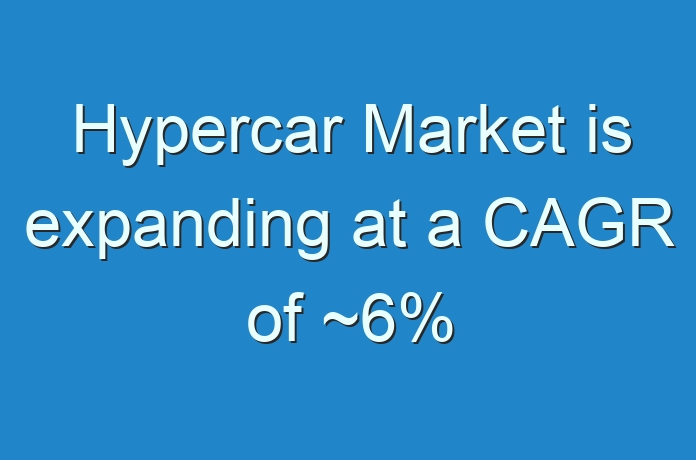
The automotive industry has witnessed remarkable changes over the past couple of decades, primarily driven by new technologies and the advent of innovative concepts. Advancements in engineering technologies, along with evolving regulatory landscape have played an imperative role in shaping the overall landscape of the automotive sector. With fast-paced developments and the onset of new technologies, the production of hypercars has gained considerable pace over the past few years and the trend is likely to continue over the course of the forecast period. The automotive sector has gradually entered an era in which, high-performance, environment sustainability, and passenger safety are of the utmost importance for both, manufacturers as well as consumers.
Stakeholders across the hypercar market are bound to focus on four major parameters to gain a competitive edge in the current market for hypercars, including rareness, design, price, and performance. As a result, a flurry of new hypercars has entered the market, as market players continue to focus on launching new hypercars to establish a solid foothold in the hypercar market. One of the most influential factors that have played an essential role in driving the demand for hypercars across the world is the exclusiveness of hypercars.
Request a sample to get extensive insights into the Hypercar Market
Companies Focus on Development of Eco-friendly Hypercars
Over the past couple of decades, in the wake of the changing environmental landscape, global warming, and growing awareness regarding the same, the automotive sector is increasingly being pressurized by regulatory authorities to minimize carbon footprint, and lean toward the adoption of cleaner and sustainable energy alternatives. In response, companies in the hypercar market are increasingly focusing on new technologies to develop new variants of hybrid and full-electric hypercars.
Moreover, a few startups, particularly in North America, are also exploring the possibility of hydrogen-based power systems. For instance, Hyperion, a start-up based in California has recently developed the XP-1– a revolutionary hypercar that utilizes zero-emissions and high-performance powertrains by deploying a technology that was originally introduced by NASA. As per Hyperion, the XP-1 is expected to revolutionize the future of the automotive sector, and enable the development of clean and sustainable hypercars in the future. Several industry leaders are currently investing considerable resources toward the development of all-electric and hybrid hyper-cars– a trend that is likely to continue in the upcoming years.
Market Players Focus on Launching New Hypercars to Gain Advantage
As competition continues to intensify in the global hypercar market, market players are increasingly relying on organic growth strategies such as the launch of new cars and technology to gain an advantage in the current market landscape. While North America and Europe are expected to remain at the forefront in terms of innovations and new technologies related to hypercars, the Asia Pacific region is tipped to gradually emerge as one of the most lucrative markets for OEMs operating in the hypercar market.
To understand how our report can bring difference to your business strategy, Ask for a brochure
At present, a broad range of new hypercars has either entered the market or are in the pipeline due to which, the hypercar market is projected to witness significant activity in the forthcoming years. Sensing the growing interest in hypercars, several brands are launching new hypercars. For instance, in May 2019, Ferrari announced the launch of the Ferrari SF90 Stradale– a plug-in hybrid hypercar with around 1,000 horsepower. Similarly, Mahindra Auto launched a new company in Europe– Automobili Pininfarina, which is likely to roll out hypercars in the upcoming years. The majority of the OEMs are focusing on the production electric hypercars due to increasing government support, environment regulations, and sustainability.
COVID-19 Pandemic Pose Challenges for Hypercar Market
The onset of the novel COVID-19 pandemic has had a catastrophic effect on the global automotive sector. The industrial sector in major automotive hubs, including China, India, Germany, and Italy were shut down for a brief period in the first two quarters of 2020 due to which, operations across the manufacturing facilities and other facets of the business have been disrupted. Moreover, stringent lockdowns coupled with restrictions on cross-border trader and transportation have also put forward several challenges across the global supply chain across the hypercar market during the COVID-19 pandemic.
Stuck in a neck-to-neck competition with other brands? Request a custom report on Hypercar Market
TMR’s Latest News Publication –





